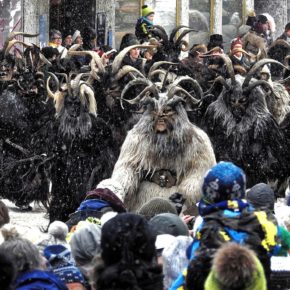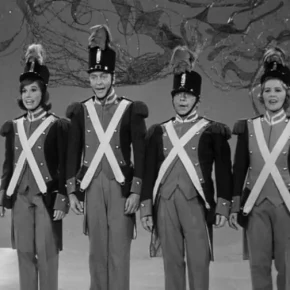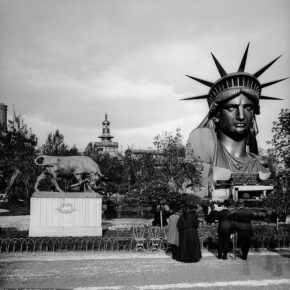Another birthday week event under the belt: Episode III has been seen, tasted, chewed, digested and pondered.
I made the trek to the Uptown last night to see Revenge Of The Sith, hoping that Lucas had finally managed to get back some of the mojo and magic from his first trilogy. On the whole, Lucas redeems himself. However, there are still a lot of things that left me wanting more.
The biggest problem that Lucas faced with this prequel trilogy is the evolution of filmmaking since 1983’s Return Of The Jedi. A lot of great, epic films have been released since then, most notably the Lord Of The Rings trilogy. With the LotR films, director Peter Jackson had to invent and/or perfect a lot of the technologies to realize his vision of Middle-Earth. This is the same challenge faced by Lucas in the mid-1970s to 1983, while making the original Star Wars trilogy, and to a certain extent, the challenge he faced with this new trilogy.
However, whereas Peter Jackson didn’t write the original source material for his films, Lucas did. This worked well for the first trilogy, where Lucas actively sought collaborators to help him achieve his vision, handing over the directing reins for The Empire Strikes Back and Return Of The Jedi, thus placing in some critical checks and balances.
For this latest trilogy, though, Lucas decided to do the whole thing by himself, relying on technology – specifically, digital cinematography, compositing and effects – to achieve what human collaborators once did. I posted the following comment at Dan’s Horrendous Waste:
One thing that the prequel trilogy lays bare is the fact that Lucas is not a great overall director or writer. He’s a superb effects director or choreographer, and I think that he is much better at realizing the visual side of his creations. I’m not sure that he understands the role of language in plot development. He is too reliant on the cliché, and has a problem connecting dialogue, physical expression and nuanced delivery. The only actor who really seemed to get it, in my mind, was Jimmy Smits….
But Lucas didn’t realize his weaknesses, and this is a case where his love of technology – and his belief that it removed the need for outside assistance – is his downfall with this trilogy.
That said, Lucas did a lot to redeem himself with RotS. The movie, as a whole, flows better from scene to scene, and unlike the previous two films, it doesn’t pander as much to the under-12 set. The imagery is much darker and sinister, as the defeat of the Jedi, the fall of the Republic, and the transformation of Anakin Skywalker into Darth Vader are all realized. There is less dialogue in this film (although what’s there is painful in its banality), which allows the film’s visual spectacle to take precedence.
And Lucas gets the action side of visuals, excelling when given the chance. The saber battles – Skywalker and Kenobi vs. Dooku, the Jedi Council vs. Plapatine, and the ultimate Skywalker vs. Kenobi fight – were very well done, well-paced and visually stunning. The battle scenes that opened the film were also well-executed. All-digital characters, such as Yoda and General Grievous, are much more believable than in past installments (and that’s good, because Peter Jackson’s WETA Digital basically rewrote the digital character concept with Gollum).
I also like the fact that, as the movie progressed, the camera work slowly changed to a mode more consistent with the original Star Wars cinematography. There are fewer panning, swooping shots, more straight cuts, and simpler compositions. This allows for a more seamless flow between the new film and its older sequels (damn, it’s odd to type that sentence). I also like the nods to the next film in the forms of the Corellian “Corvette” set (as seen in the beginning of Episode IV) and the Lars family standing with baby Luke on Tattoine, staring into the setting twin suns.
I’m glad that Lucas answered some other nagging questions in Rots, but the execution was sometimes very clumsy. The revelation of the “Jedi afterlife” seemed clumsy, although it’s good to know that even Yoda wasn’t the most learned Jedi Master. The droid memory issue was also thrown in very suddenly, though knowing the way it was carried out does make the droids’ actions in the original trilogy a lot more enjoyable. And above all else, the sudden submission of Skywalker to Palpatine/Sidious was far too jarring for my tastes, and it seems like there might have been some judicious expurgation to whittle down the film’s length at the expense of some gap-filling. Or it could just be Lucas’ scriptwriting ineptitude – it’s hard to say, either way.
(And I easily spotted Lucas’ cameo in the film – nice outfit, George!)
The cast was still top-notch, though they were largely sleepwalking through their performances – most of which I blame on Lucas. All of them – even the much-maligned Hayden Christensen – are talented and capable of subtle moods, expressions, and phrasing. But subtlety is not Lucas’ strong point, and the actors’ performances lack for this shortcoming. As mentioned before, I thought that Jimmy Smits did a great job with the role that he had, and the same can be said for Ian McDiarmid, Samuel L. Jackson and Chrsitopher Lee. Frank Oz’s voicing of Yoda was also quite good, even though the lines that Lucas forced him to speak were a bit too predictable. A queston, though: why couldn’t Lucas have cast one of the kids playing the Jedi younglings as the younger Anakin? The last youngling to die is especially adept at handling a saber and showing true fear and anguiush on his face – why not him?
But I did enjoy the film, all things being equal. Watching at the Uptown was a lot like the experience I had watching these films as a child: in a single-screen movie palace, balcony-and-all, with a lot of die-hard fans in the midst. Granted, some of the people in attendance in the Uptown were downright rude (especially during the adverts and previews – booing wasn’t necessary, though I find the sheer number of ads a bit much), but it was still the perfect venue to get into the film. I blocked out the audience once the 20th Century Fox image appeared, swept into the films like I was as a kid. Granted, it wasn’t entirely the same – a lot of living has happened between 1983 and 2005 – but it was still magical, all the same.
It’s a bit like going to a magic show as an adult: you marvel in the imagery, even though you know it’s all just a trick of the eye. The mystical aspect is largely gone, but you still appreciate the craft.













Comments by randomduck
virtual advent 2020: a fab holiday (and it’s been 40 years…)
@compassionknit: I think the issue is that John had Julian ...
ten on tuesday: the music died too young
Good call on those three!
my 30s: a look back
Thanks, Darren and Jeff! Jeff, riding along the California coast with ...